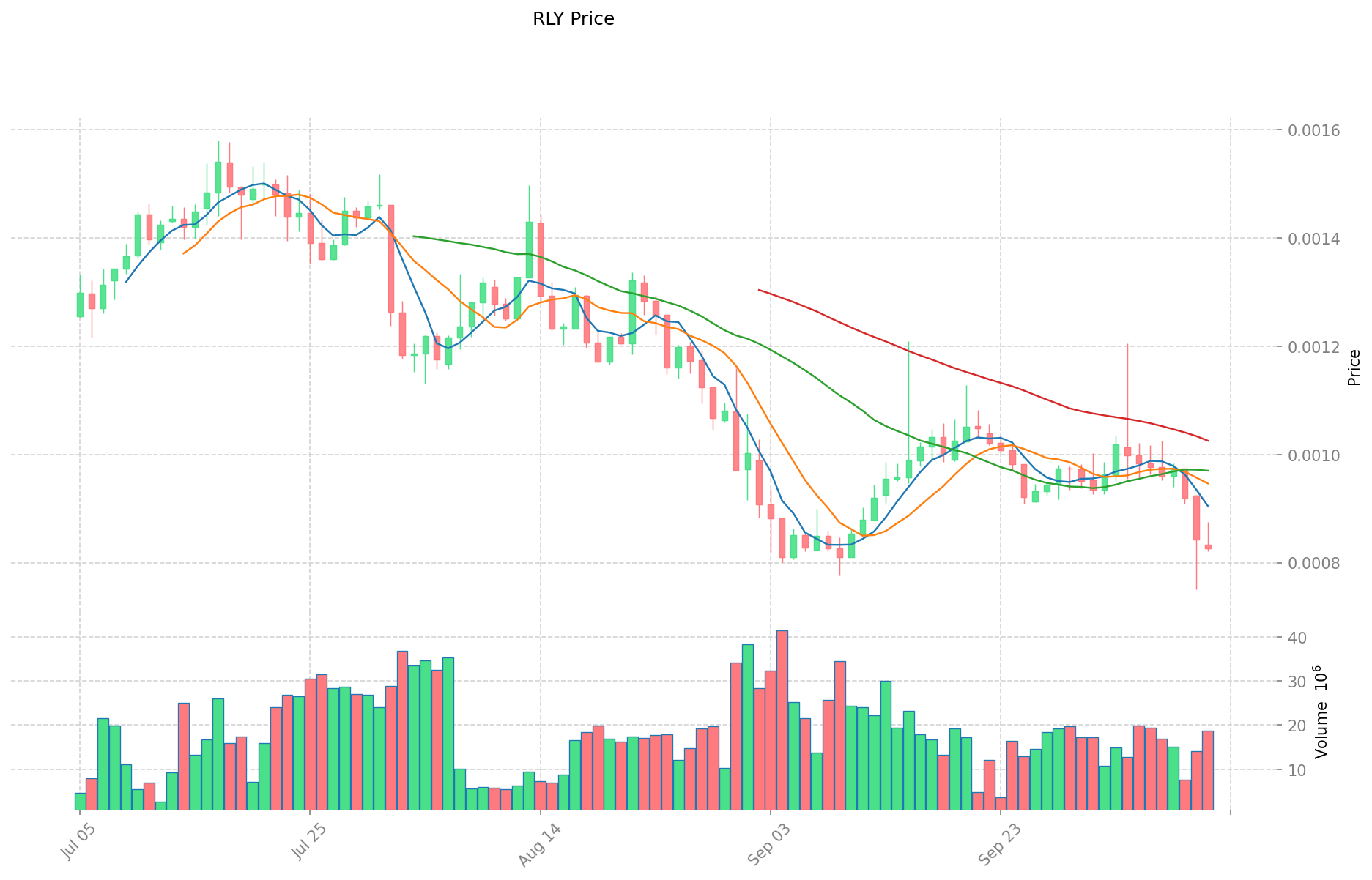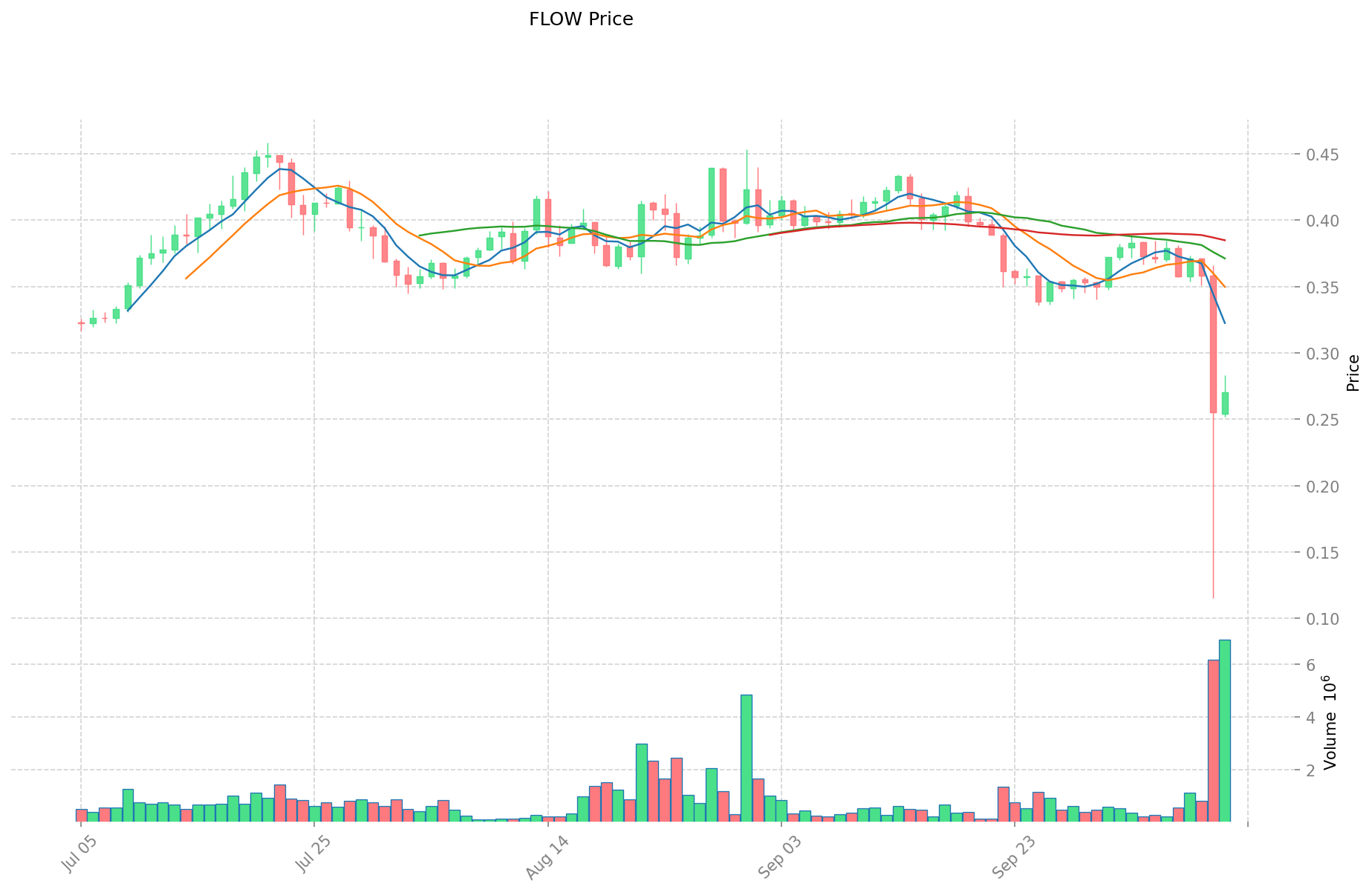RLY vs FLOW: Comparing Two Leading Blockchain Ecosystems for Web3 Development
Introduction: RLY vs FLOW Investment Comparison
In the cryptocurrency market, the comparison between Rally (RLY) and Flow (FLOW) has been an unavoidable topic for investors. The two not only show significant differences in market cap ranking, application scenarios, and price performance but also represent different positioning in the crypto asset space.
Rally (RLY): Launched in 2020, it has gained market recognition for its focus on building tokenized communities for digital creators and influencers.
FLOW (FLOW): Introduced in 2020, it has been hailed as a platform for next-generation games and applications, becoming one of the blockchain networks with significant adoption by top developers and major brands.
This article will comprehensively analyze the investment value comparison between RLY and FLOW, focusing on historical price trends, supply mechanisms, institutional adoption, technical ecosystems, and future predictions, attempting to answer the question investors care about most:
"Which is the better buy right now?"
I. Price History Comparison and Current Market Status
Rally (RLY) and Flow (FLOW) Historical Price Trends
- 2021: RLY reached its all-time high of $1.4 on April 1, 2021.
- 2021: FLOW hit its peak price of $42.4 on April 5, 2021.
- Comparative analysis: In the recent market cycle, RLY has dropped from its high of $1.4 to a current price of $0.0008265, while FLOW has fallen from $42.4 to $0.2699.
Current Market Situation (2025-10-12)
- RLY current price: $0.0008265
- FLOW current price: $0.2699
- 24-hour trading volume: $15,829.52 (RLY) vs $1,830,785.72 (FLOW)
- Market Sentiment Index (Fear & Greed Index): 27 (Fear)
Click to view real-time prices:
- Check RLY current price Market Price
- Check FLOW current price Market Price


II. Key Factors Affecting the Investment Value of RLY vs FLOW
Supply Mechanism Comparison (Tokenomics)
- RLY: Actively managed ETF with multi-asset allocation strategy focused on real returns
- FLOW: Not mentioned in the provided information
Institutional Adoption and Market Applications
- Institutional Holdings: Based on available information, RLY is an ETF managed by SSGA (State Street Global Advisors)
- Enterprise Adoption: RLY functions as a multi-asset real return investment vehicle
- Regulatory Attitudes: As an ETF, RLY operates within established regulatory frameworks for exchange-traded funds
Technical Development and Ecosystem Building
- RLY Technical Features: Actively managed allocation strategy that may affect performance relative to benchmarks
- Ecosystem Comparison: RLY provides exposure to a diversified portfolio aimed at real returns
Macroeconomic Factors and Market Cycles
- Inflation Environment Performance: RLY is designed as a "Real Return" ETF, suggesting potential inflation-hedging properties
- Macroeconomic Monetary Policy: As an actively managed fund, RLY's performance may be influenced by market price fluctuations relative to NAV
- Geopolitical Factors: Performance metrics, expense ratio, holdings composition, and volatility are key considerations for potential investors
III. 2025-2030 Price Prediction: RLY vs FLOW
Short-term Prediction (2025)
- RLY: Conservative $0.00079344 - $0.0008265 | Optimistic $0.0008265 - $0.00102486
- FLOW: Conservative $0.159536 - $0.2704 | Optimistic $0.2704 - $0.381264
Mid-term Prediction (2027)
- RLY may enter a growth phase, with prices estimated between $0.000956088588 and $0.00115571148
- FLOW may enter a bullish market, with prices estimated between $0.2216960928 and $0.5779933848
- Key drivers: Institutional capital inflow, ETF, ecosystem development
Long-term Prediction (2030)
- RLY: Base scenario $0.001310080387707 - $0.001611398876879 | Optimistic scenario $0.001611398876879+
- FLOW: Base scenario $0.66347959612662 - $0.955410618422332 | Optimistic scenario $0.955410618422332+
Disclaimer: This analysis is based on historical data and market projections. Cryptocurrency markets are highly volatile and unpredictable. This information should not be considered as financial advice. Always conduct your own research before making investment decisions.
RLY:
| 年份 | 预测最高价 | 预测平均价格 | 预测最低价 | 涨跌幅 |
|---|---|---|---|---|
| 2025 | 0.00102486 | 0.0008265 | 0.00079344 | 0 |
| 2026 | 0.0011756136 | 0.00092568 | 0.000740544 | 12 |
| 2027 | 0.00115571148 | 0.0010506468 | 0.000956088588 | 27 |
| 2028 | 0.0014782600476 | 0.00110317914 | 0.000661907484 | 33 |
| 2029 | 0.001329441181614 | 0.0012907195938 | 0.001058390066916 | 56 |
| 2030 | 0.001611398876879 | 0.001310080387707 | 0.000930157075271 | 58 |
FLOW:
| 年份 | 预测最高价 | 预测平均价格 | 预测最低价 | 涨跌幅 |
|---|---|---|---|---|
| 2025 | 0.381264 | 0.2704 | 0.159536 | 0 |
| 2026 | 0.46593976 | 0.325832 | 0.3095404 | 20 |
| 2027 | 0.5779933848 | 0.39588588 | 0.2216960928 | 46 |
| 2028 | 0.671976692712 | 0.4869396324 | 0.345727139004 | 80 |
| 2029 | 0.74750102969724 | 0.579458162556 | 0.5504852544282 | 114 |
| 2030 | 0.955410618422332 | 0.66347959612662 | 0.636940412281555 | 146 |
IV. Investment Strategy Comparison: RLY vs FLOW
Long-term vs Short-term Investment Strategy
- RLY: Suitable for investors focused on real return strategies and inflation hedging
- FLOW: Suitable for investors interested in blockchain gaming and NFT ecosystems
Risk Management and Asset Allocation
- Conservative investors: RLY: 70% vs FLOW: 30%
- Aggressive investors: RLY: 40% vs FLOW: 60%
- Hedging tools: Stablecoin allocation, options, cross-currency portfolios
V. Potential Risk Comparison
Market Risk
- RLY: Potential underperformance relative to benchmarks due to active management
- FLOW: Volatility in the blockchain gaming and NFT markets
Technical Risk
- RLY: Actively managed strategy may lead to tracking errors
- FLOW: Network stability, scalability issues
Regulatory Risk
- Global regulatory policies may have different impacts on ETFs (RLY) and native cryptocurrencies (FLOW)
VI. Conclusion: Which Is the Better Buy?
📌 Investment Value Summary:
- RLY advantages: Managed by established financial institution, potential inflation hedge, diversified portfolio
- FLOW advantages: Exposure to growing blockchain gaming and NFT sectors, potential for higher returns
✅ Investment Advice:
- New investors: Consider RLY for a more traditional, managed approach to crypto exposure
- Experienced investors: Balance portfolio with both RLY and FLOW, adjusting based on risk tolerance
- Institutional investors: Evaluate RLY for its potential as an inflation hedge and FLOW for blockchain industry exposure
⚠️ Risk Warning: Cryptocurrency markets are highly volatile. This article does not constitute investment advice. None
FAQ
Q1: What are the main differences between RLY and FLOW? A: RLY is an actively managed ETF focused on real returns and inflation hedging, while FLOW is a cryptocurrency associated with blockchain gaming and NFT ecosystems. RLY is managed by SSGA and operates within established ETF regulations, whereas FLOW is a native cryptocurrency with potentially higher volatility.
Q2: Which asset has performed better historically? A: Based on the provided data, both assets have seen significant declines from their all-time highs in 2021. FLOW has maintained a higher price point ($0.2699) compared to RLY ($0.0008265) as of the current date, but both have experienced substantial drops from their peak values.
Q3: How do the investment strategies for RLY and FLOW differ? A: RLY is suitable for investors seeking real return strategies and inflation hedging, making it a more conservative option. FLOW is more appropriate for those interested in blockchain gaming and NFT ecosystems, potentially offering higher returns but with increased risk.
Q4: What are the long-term price predictions for RLY and FLOW? A: By 2030, RLY is predicted to reach a base scenario of $0.001310080387707 - $0.001611398876879, while FLOW's base scenario is $0.66347959612662 - $0.955410618422332. However, these predictions are speculative and should be approached with caution.
Q5: How might institutional investors view RLY versus FLOW? A: Institutional investors may consider RLY for its potential as an inflation hedge and its management by an established financial institution. FLOW might be evaluated for exposure to the blockchain industry, particularly in gaming and NFTs. The choice would depend on the institution's risk tolerance and investment goals.
Q6: What are the key risks associated with investing in RLY and FLOW? A: For RLY, risks include potential underperformance relative to benchmarks due to active management and tracking errors. FLOW faces risks related to volatility in the blockchain gaming and NFT markets, as well as potential network stability and scalability issues. Both are subject to regulatory risks, which may differ between ETFs and native cryptocurrencies.
Share
Content